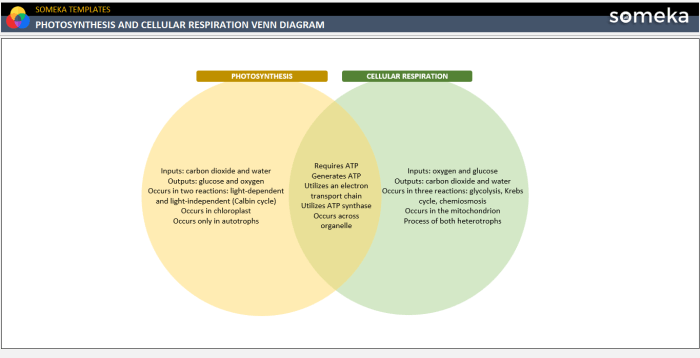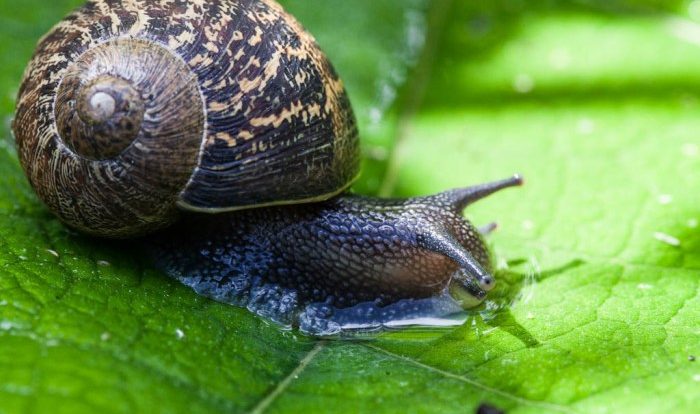Embark on a scientific odyssey with our Venn diagram on photosynthesis and cellular respiration, a meticulous visual representation that illuminates the intricate connections and distinctions between these fundamental life processes.
This comprehensive analysis delves into the heart of these metabolic pathways, exploring their shared components, energy transformations, and profound environmental significance, offering a comprehensive understanding of their vital roles in sustaining life on Earth.
Photosynthesis and Cellular Respiration: A Comparative Overview

Photosynthesis and cellular respiration are fundamental biological processes that sustain life on Earth. Photosynthesis, a process unique to plants and certain microorganisms, harnesses light energy to convert carbon dioxide and water into glucose and oxygen. In contrast, cellular respiration occurs in all living organisms and utilizes glucose to produce energy, releasing carbon dioxide and water as byproducts.Despite
their distinct roles, photosynthesis and cellular respiration share several key similarities. Both processes involve the transfer of electrons through electron transport chains, generating ATP, the primary energy currency of cells. Additionally, both processes rely on enzymes to facilitate their reactions.
Venn Diagram: Intersecting Components
The following Venn diagram visually represents the overlapping and distinct components of photosynthesis and cellular respiration:
- Reactants:
- Photosynthesis: Carbon dioxide, water
- Cellular respiration: Glucose
- Products:
- Photosynthesis: Glucose, oxygen
- Cellular respiration: Carbon dioxide, water
- Energy Transformations:
- Photosynthesis: Light energy to chemical energy (glucose)
- Cellular respiration: Chemical energy (glucose) to chemical energy (ATP)
- Shared Components:
- Electron transport chains
- ATP synthase
- Enzymes
Energy Flow and Conversion, Venn diagram on photosynthesis and cellular respiration
Photosynthesis captures light energy and converts it into chemical energy stored in glucose. This energy is released during cellular respiration, generating ATP, which powers various cellular processes. The efficiency of energy conversion in photosynthesis is approximately 1-2%, while in cellular respiration, it is around 30-40%.The
energy released during cellular respiration is essential for maintaining cellular homeostasis, growth, and reproduction. However, the release of carbon dioxide as a byproduct contributes to the atmospheric carbon dioxide levels.
Environmental Significance
Photosynthesis and cellular respiration play crucial roles in the global carbon cycle. Photosynthesis removes carbon dioxide from the atmosphere, while cellular respiration releases it. These processes help maintain a balance in atmospheric carbon dioxide levels, regulating the Earth’s climate.Additionally, photosynthesis produces oxygen as a byproduct, which is essential for aerobic respiration in all living organisms.
The balance between photosynthesis and cellular respiration is crucial for maintaining a stable and habitable environment.
FAQ Section: Venn Diagram On Photosynthesis And Cellular Respiration
What is the primary difference between photosynthesis and cellular respiration?
Photosynthesis utilizes light energy to synthesize glucose, releasing oxygen as a byproduct, while cellular respiration breaks down glucose, consuming oxygen and releasing carbon dioxide.
How does the Venn diagram illustrate the shared components of these processes?
The overlapping region of the Venn diagram represents shared components such as water, carbon dioxide, and ATP, which play crucial roles in both photosynthesis and cellular respiration.
What is the environmental significance of these processes?
Photosynthesis and cellular respiration contribute to the global carbon cycle and oxygen levels, maintaining a stable atmosphere and supporting the diversity of life on Earth.


